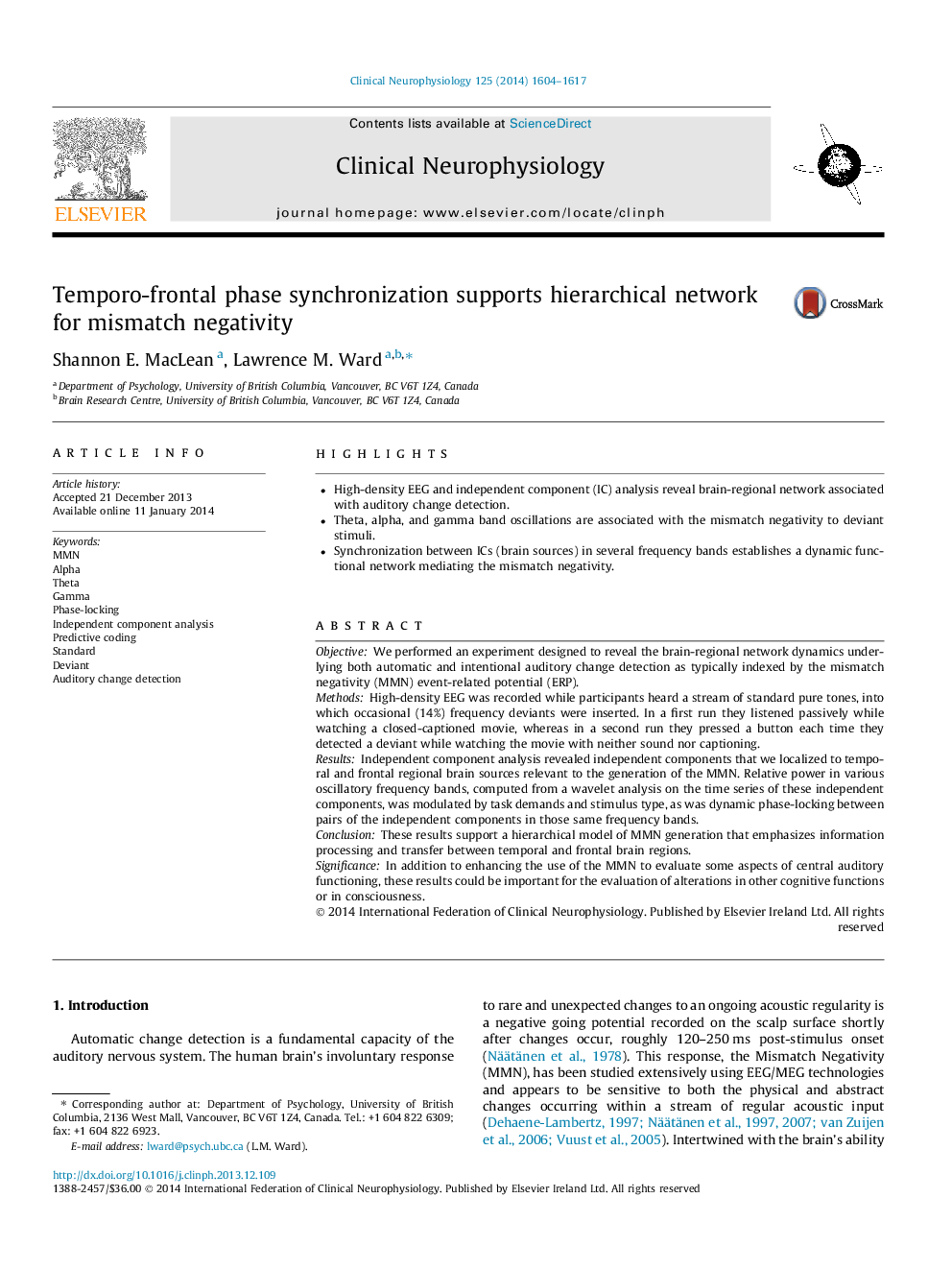| Article ID | Journal | Published Year | Pages | File Type |
|---|---|---|---|---|
| 3043488 | Clinical Neurophysiology | 2014 | 14 Pages |
•High-density EEG and independent component (IC) analysis reveal brain-regional network associated with auditory change detection.•Theta, alpha, and gamma band oscillations are associated with the mismatch negativity to deviant stimuli.•Synchronization between ICs (brain sources) in several frequency bands establishes a dynamic functional network mediating the mismatch negativity.
ObjectiveWe performed an experiment designed to reveal the brain-regional network dynamics underlying both automatic and intentional auditory change detection as typically indexed by the mismatch negativity (MMN) event-related potential (ERP).MethodsHigh-density EEG was recorded while participants heard a stream of standard pure tones, into which occasional (14%) frequency deviants were inserted. In a first run they listened passively while watching a closed-captioned movie, whereas in a second run they pressed a button each time they detected a deviant while watching the movie with neither sound nor captioning.ResultsIndependent component analysis revealed independent components that we localized to temporal and frontal regional brain sources relevant to the generation of the MMN. Relative power in various oscillatory frequency bands, computed from a wavelet analysis on the time series of these independent components, was modulated by task demands and stimulus type, as was dynamic phase-locking between pairs of the independent components in those same frequency bands.ConclusionThese results support a hierarchical model of MMN generation that emphasizes information processing and transfer between temporal and frontal brain regions.SignificanceIn addition to enhancing the use of the MMN to evaluate some aspects of central auditory functioning, these results could be important for the evaluation of alterations in other cognitive functions or in consciousness.
